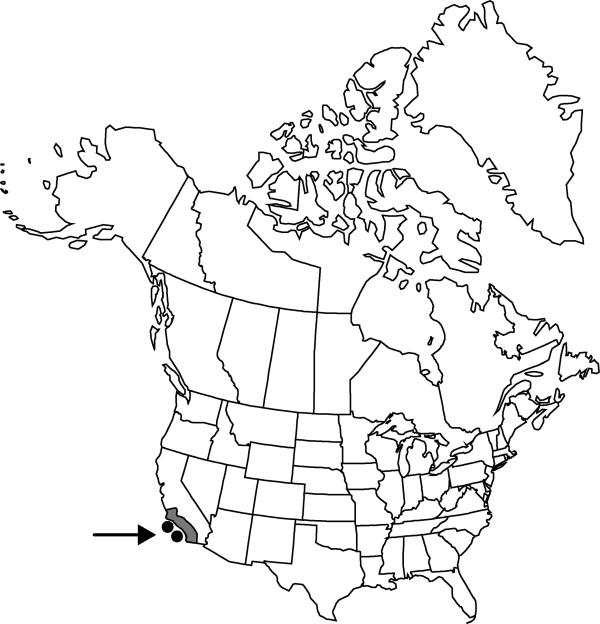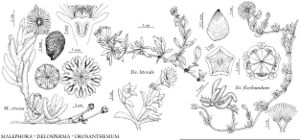Malephora crocea
Deutsche Gärt.-Zeitung 43: 7. 1928.
Subshrubs. Stems light gray- brown, exterior fissured, barklike, to 2 cm diam., corky, becoming woody with age. Leaves crowded at end of short shoots, pale green, sometimes red tinged; blade triangular in cross section, 2.5–6(–12) × 0.6 cm, apex blunt, glaucous. Inflorescences terminal, flowers solitary; pedicel 1–6 cm. Flowers: calyx 0.8–1.5 cm; calyx lobes (4–)5(–6), 3 longer, with translucent margins, 2 shorter, apex acute; petals 40–65, purplish abaxially, orange adaxially, sometimes completely yellow, orange, or red, 4–12 mm; nectary present; stamens 2–5 mm; filaments connate basally, forming dense ring, white-hairy; ovary inferior. Capsules obcuneiform, 8(–12)-loculed; adaxial seed pockets with bifid placental tubercles. Seeds ca. 75, 3–15 per locule, 1 × 0.8 mm. 2n = 36.
Phenology: Flowering mostly spring–summer.
Habitat: Margins of coastal wetlands and bluffs
Elevation: 0-100 m
Distribution

Calif., Mexico (Baja California), Africa.
Discussion
Malephora crocea is grown as an ornamental and often sold as a ground cover for landscaping. It is cultivated along freeways as far north and inland as Fresno, California.
Two varieties of Malephora crocea have been recognized: var. crocea, with the adaxial surfaces of the petals orange and the abaxial surfaces purplish; and var. purpureocrocea (Haworth) H. Jacobsen & Schwantes, with petals purplish on both surfaces, which is grown for ornamental purposes and is not naturalized in the flora.
